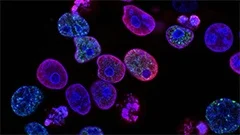Introduction
Membrane receptors and signal transduction represent fundamental aspects of cell biology, allowing cells to respond to various extracellular stimuli. This course aims to provide a comprehensive understanding of membrane receptors, their classification, structure, and function, as well as the intracellular signaling pathways that are activated upon binding with their respective ligands.
Importance of Membrane Receptors and Signal Transduction
Understanding the mechanisms underlying membrane receptor-mediated signal transduction is essential for understanding cell behavior, physiology, and pathophysiology. It provides insights into how cells interact with their environment, adapt to changing conditions, and regulate various cellular processes such as growth, differentiation, migration, and apoptosis.
Membrane Receptors: An Overview
Classification of Membrane Receptors
Membrane receptors can be broadly classified into two main groups: 1) ionotropic receptors that are primarily ligand-gated ion channels, and 2) metabotropic receptors that do not directly control ion channels but instead activate intracellular signaling cascades upon ligand binding.
Structural Features of Membrane Receptors
Membrane receptors consist of extracellular, transmembrane, and intracellular domains. The extracellular domain is responsible for recognizing and binding specific ligands, while the transmembrane domain allows for proper anchoring in the lipid bilayer. The intracellular domain interacts with various intracellular proteins to initiate downstream signaling.
Ligand-Receptor Interactions
The binding of a ligand to its receptor induces conformational changes in the receptor, leading to activation or inhibition of signaling pathways. The strength and specificity of these interactions are crucial for proper cellular responses.
Signal Transduction Pathways
G protein-coupled Receptors (GPCRs)
Classification and Structure
GPCRs constitute the largest family of membrane receptors, with over 800 members in humans. They can be further divided into five main families based on their sequence homology. The structure of GPCRs consists of seven transmembrane helices connected by extracellular and intracellular loops.
Activation Mechanism
Upon ligand binding, GPCRs interact with heterotrimeric G proteins composed of α, β, and γ subunits. This interaction leads to the activation or inhibition of adenylate cyclase, phospholipase C, or other effector enzymes, depending on the specific G protein subtypes involved.
Signaling Pathways Downstream of GPCR Activation
Downstream effects of activated GPCRs include changes in intracellular calcium and cAMP levels, activation of MAP kinase cascades, or regulation of ion channels. These pathways ultimately lead to alterations in gene expression, cellular proliferation, differentiation, migration, and other cellular processes.
Receptor Tyrosine Kinases (RTKs)
Classification and Structure
RTKs are another important group of membrane receptors that play essential roles in various cellular functions such as growth, differentiation, and survival. They consist of an extracellular ligand-binding domain, a transmembrane domain, and an intracellular tyrosine kinase domain.
Activation Mechanism
Upon ligand binding, the extracellular domain undergoes conformational changes, leading to autophosphorylation of specific tyrosine residues in the intracellular domain. This phosphorylation serves as a docking site for adaptor proteins and enzymes, initiating downstream signaling cascades.
Signaling Pathways Downstream of RTK Activation
Activated RTKs trigger various signaling pathways, including the Ras/MAP kinase pathway, PI3K/Akt pathway, and JAK/STAT pathway. These pathways ultimately regulate gene expression, cell proliferation, apoptosis, migration, and other cellular processes.
Conclusion
Understanding membrane receptors and signal transduction is essential for comprehending the intricate mechanisms governing cell behavior, physiology, and pathophysiology. By studying this topic, students will gain insights into how cells communicate with their environment and adapt to changing conditions, as well as develop a foundation for further research in cell biology and related fields.
MCQ: Test your knowledge!
Do you think you know everything about this course? Don't fall into the traps, train with MCQs! eBiologie has hundreds of questions to help you master this subject.
These courses might interest you
Create a free account to receive courses, MCQs, and advice to succeed in your studies!
eBiologie offers several eBooks containing MCQ series (5 booklets available free for each subscriber).



